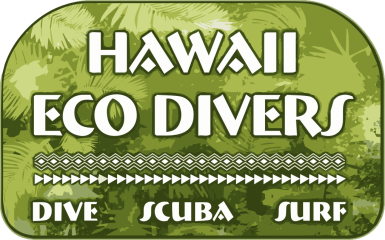THE ASTOUNDING DIVERSITY OF OAHU’S CORAL REEFS
Welcome back to our deep dive into the awe-inspiring coral reefs of Oahu. Known for its lush landscapes and vibrant culture, Oahu also boasts some of the most diverse and enchanting coral reefs on the planet. These underwater havens are not just visual spectacles; they are bustling ecosystems brimming with an array of marine life. In this section, we’ll explore the intricate diversity of Oahu’s reefs, highlighting why these ecosystems are so special and crucial for the marine world.
The Rich Tapestry of Life Beneath the Waves
A Spectrum of Coral Species
The coral reefs of Oahu are a mosaic of various coral species, each contributing to the reef’s health and resilience. From the robust boulder corals to the delicate branching corals, each species plays a pivotal role in the ecosystem. The University of Hawaii’s Coral Reef Ecology Lab offers extensive research on the different types of corals found around Oahu, providing valuable insights into their unique characteristics and roles.
A Haven for Marine Species
Oahu’s coral reefs are more than just beautiful structures; they are vital habitats for countless marine species. These reefs provide shelter, food, and breeding grounds for a plethora of creatures, ranging from the tiniest invertebrates to large predatory fish. The Hawaii Coral Reef Network is an excellent resource for understanding the biodiversity present in these reefs and the intricate relationships among different species.
Colorful Fish and Intricate Invertebrates
Diving into Oahu’s waters, one is greeted by a kaleidoscope of fish, each more colorful than the last. From the vibrant yellow tangs to the elusive moray eels, these fish add to the dynamic nature of the reefs. Additionally, the reefs are home to a fascinating array of invertebrates like sea urchins, starfish, and octopuses, each playing a unique role in the reef’s ecology. The Waikiki Aquarium provides an extensive catalog of the marine life found in Oahu’s reefs, which is a great resource for enthusiasts and researchers alike.
The Role of Algae and Seagrasses
While the vibrant corals and dynamic marine life often steal the spotlight in Oahu’s coral reefs, the role of algae and seagrasses in these ecosystems cannot be overstated. These often-overlooked components are fundamental to the health and sustainability of the reefs.
Algae in coral reef ecosystems play a multifaceted role. They are primary producers, meaning they convert sunlight into energy through photosynthesis, forming the base of the food web. This process not only feeds countless marine species but also helps in oxygen production, which is vital for marine life. The variety of algae, from microscopic phytoplankton to larger macroalgae, each contribute uniquely to the ecosystem. The Smithsonian’s Ocean Portal offers an in-depth look at the types of algae found in coral reef environments and their ecological roles. Additionally, the National Marine Sanctuaries website provides a comprehensive overview of coral reef ecosystems, including the role of algae.
Seagrasses are flowering plants found in shallow, sheltered marine environments. They form dense underwater meadows that are crucial for the health of coral reefs. These meadows serve as nurseries for many fish and invertebrate species, offering shelter and abundant food. Seagrasses also play a significant role in stabilizing the seabed, preventing erosion, and maintaining water quality by trapping sediments and absorbing nutrients.
For more information on the importance of seagrasses in coral reef ecosystems, the United Nations Environment Programme provides resources on their ecological significance. Additionally, the World Seagrass Association offers insights into the latest research and conservation efforts related to seagrasses.
The Interconnectedness of the Reef Ecosystem
The Symbiotic Relationships
The coral reefs are a prime example of symbiosis in action. Coral polyps and algae have a mutualistic relationship, where the algae provide food through photosynthesis, and in return, the coral offers protection and nutrients. This delicate balance is crucial for the survival of the reefs. The National Ocean Service provides detailed information on how these relationships work and their significance to the reef’s health.
The Impact of Predators and Prey
Predators like sharks and large fish play a critical role in maintaining the balance of the reef ecosystem. They keep the population of smaller fish in check, preventing overgrazing on the coral. Simultaneously, the prey species contribute to the reef’s health by controlling algae growth. The Pew Charitable Trusts offer insights into the role of sharks and other predators in coral reef ecosystems.
The Importance of Coral Reefs to Oahu
Economic and Cultural Significance
Coral reefs are not just ecological treasures; they hold immense economic and cultural value for Oahu. They support local fisheries, tourism, and are deeply intertwined with Hawaiian culture and traditions. The Hawaii Tourism Authority provides data on how coral reefs contribute to Hawaii’s economy and cultural heritage.
Ecological Services
Reefs provide critical services like coastal protection, nutrient cycling, and carbon sequestration. They act as natural barriers against storms, protecting the shoreline from erosion. The Environmental Protection Agency offers resources on the ecological services provided by coral reefs and their importance in climate change mitigation.
Conclusion
The coral reefs of Oahu are a testament to the complexity and beauty of marine ecosystems. Their diversity not only provides a visual spectacle for divers and snorkelers but also plays a crucial role in the health of our oceans. By understanding and appreciating the intricacies of these ecosystems, we can better advocate for their protection and preservation.
